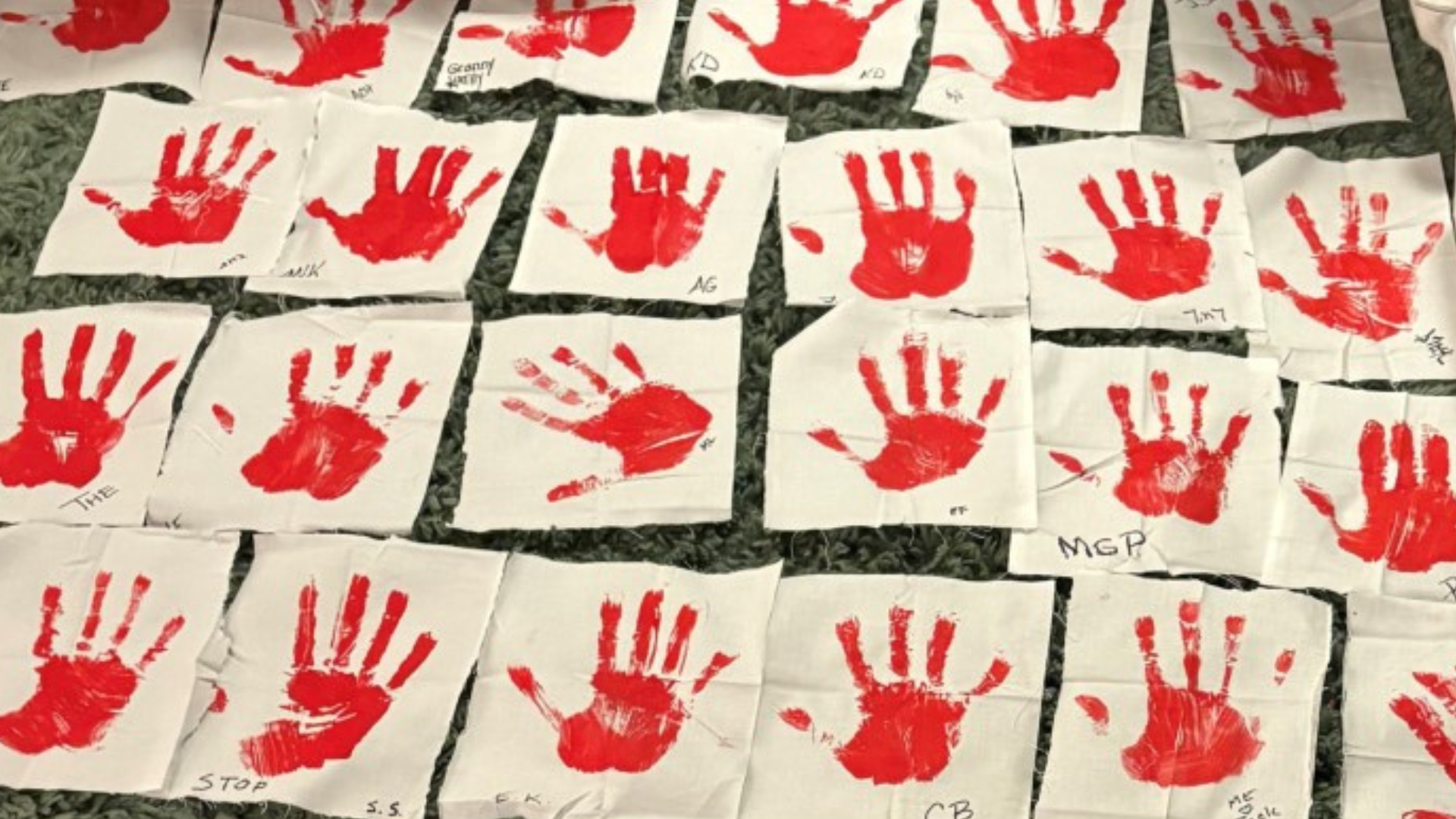Cuyahoga County held a briefing on August 7, updating residents and the media about the COVID-19 in the county.
County Executive Armond Budish began by thanking those at the Cuyahoga County Board of Health for their hard work and passion during unprecedented times. He went on to talk about the impact the pandemic has had on residents of Cuyahoga County.
Within the last month the county saw a 100 percent increase in applications for food assistance
“The needs that people have are growing at an exponential rate,” said Budish. He said that just within the last month the county saw a 100 percent increase in applications for food assistance. “This is terrible, especially because this doesn’t have to be.”
Budish went on to plead with Congress to come together for the greater good and “reinstate unemployment benefits” so thousands of Cuyahoga County residents are able to eat, stay in their homes, and confidently look for other jobs.
Budish praised the government sending out $1,200 stimulus checks early in the pandemic. He said that there are many people who didn’t file taxes and thus didn’t receive stimulus checks they are entitled to including 12 million people across the United States and 394,000 in Ohio who did not receive those checks. Budish said that the county partnered with several agencies across the county “to make that those who are eligible to receive these payments will get them.” He said if people have no income, less income than $12,200 and didn’t file a tax return they may be missing out on $1,200 per person. He urged people to visit IRS.gov/coronavirus/economic-impact-payments or to call 2-1-1 by October 1 to receive those stimulus checks.
Budish then shifted gears to talk about how the U.S. Census Bureau moved up its deadline to complete the count from October 31 to September 30. “Our count, the number of people who respond to the census determines all sorts of things,” said Budish. He cited it determines how much funding the county gets for food assistance, seniors, early childhood education and more. “Allocations of hundreds of millions of dollars are determined by the census,” said Budish. He also pointed out that representation in Congress is also determined by the census. “And we have to live with this number for 10 years, there isn’t a do over,” said Budish.
He went on to say that cutting the census timeline short is particularly concerning because, “typically the very end of the census effort is focused on the hardest to count people.” He said that included folks like minorities, young children, immigrants and the poor. He said these are the “very people who need the most help from the programs that the census numbers impact.”
“Tragically the death toll will continue to rise, the only way to blunt the pace of these deaths is to adapt a strong, countywide focus on prevention,” said Cuyahoga County Health Commissioner Terry Allan.
Budish said the most important thing people can do now to help is to fill out the census. “You matter,” said Budish, “but if you aren’t counted you may lose out and to be honest we all will lose out.”
Budish pointed people to call 844-330-2020 if they don’t have access to the internet to fill out their census, if they do he urged people to visit My2020census.gov.
“It’s quick, it’s easy, it’s confidential and it is critical that we do this,” said Budish.
Budish then said he was happy to hear that Governor Mike DeWine tested negative for the coronavirus after initially testing positive on Thursday for the virus before a planned meeting with President Donald Trump.
Cuyahoga County Board of Health (CCBH) Commissioner Terry Allan then talked about cases in the county. He said that the county remains in the “red risk level,” we’re considered to be at a point where transmission risk is high in our community. He said the county as of August 6 had 13,141 cases of COVID-19 reported in Cuyahoga County, with 2,177 residents needing hospitalization, 491 people who were positive for COVID-19 within the county have died within the past five months. That’s compared to 50 flu deaths over six months in the 2019/2020 flu season.
Allan reiterated that the virus can be transmitted by those who don’t have symptoms, which is why it’s so important to wear masks.
He said that cases are happening beyond congregate settings including house parties, weddings, funerals and while playing sports.
Masks, social distancing, remote work, hand hygiene are all things that are important to reduce the spread of the virus said Allan.
He then talked about CCBH’s recommendation that schools begin the school year remotely and not have extracurricular activities, while saying CCBH understands how important these activities are to kids – when it is safe. He said CCBH received hundreds of emails from the school community and has read each one. He said the CCBH understand that each district may choose a different path, and reiterated that CCBH’s recommendations are just that. He also said that some students – like those with special needs – may need to go to school in person.
Allan said the first and foremost goal is to save lives, saying that deaths in Cuyahoga County have ranged in age from 33 to 103-years-old, and the end of the pandemic isn’t in sight.
“Tragically the death toll will continue to rise, the only way to blunt the pace of these deaths is to adapt a strong, countywide focus on prevention,” said Allan.
He moved on to testing, saying that a key element to a response to the pandemic is testing and there are major barriers to testing now – including that its difficult to get tested as a child or if someone is asymptomatic.
“The reality is that you are preventing other people form dying by doing these simple actions,” said CCBH Health Director Dr. Heidi Gullett.
He again said that the CCBH is asking people to distance learn and not have large spreading events like parties, especially as the flu season is around the corner.
CCBH Medical Director, Dr. Heidi Gullett, then addressed the briefing and again reiterated the importance of wearing a mask and staying socially distant from each other.
Gullett then discussed the different types of tests that are available and said that the county only counts lab-confirmed cases in case counts.
Gullett described PCR testing as testing for the virus at that moment. She said this type of test is performed by putting a swab in the back of the nose or for children in the throat. The sample is sent to a lab and which determines if someone has the virus.
Another type of test is antigen test, which is the type of test that initially said falsely that Governor DeWine was positive for the virus. “That test is not considered a lab-confirmed case,” said Gullett. “We don’t just assume that any test, anyway is positive. We’re very specific about what we call cases.”
The third type of test is an antibody test, and Gullett said that looks to see if someone had been exposed to the infection in the past and if your body has made antibodies to fight the virus. Gullett said people are not counted as a case if they test positive for antibodies. She also said people are only ever counted once even if they receive multiple tests.
Gullett then shared that Cuyahoga County saw 699 new cases last week, and 8,953 cases since the beginning of the pandemic. Gullett said that there have been 980 hospitalizations, and 244 people admitted to the intensive care units since the beginning of the pandemic.
In order to prevent the spread and to prevent more deaths, Gullett urged people to practice social distancing measures even though she said CCBH realizes that people are sick of it.
“The reality is that you are preventing other people form dying by doing these simple actions,” said Gullett.
She then broke down different case demographics, and shared that the percent of positive cases of health care workers has dropped from about 30 percent to just more than 17 percent.
Gullett discussed how COVID-19 disproportionately impacts people of color in the county, and said they have developed an index that determines that a Black resident of the county is three times as likely to be infected with COVID-19 than a white resident.
Gullett said there are cases in every part of the county and showed an updated ZIP code map showing where those cases are. She then also showed statistics on hospital bed usage, about 81 percent of ICU adult beds are in use and about 79 percent of adult hospital beds are in use.

Responding to a question about how some school districts are not following CCBH’s recommendations and if the county anticipates further spread of COVID-19, Allan said that CCBH is concerned about further spread within the community and said CCBH has talked with schools going back in session for months. He said that CCBH respects the rights of districts to do what is best for their school communities. He said CCBH plans to continue to educate districts about safety in terms of responding to COVID-19 and how to handle things like food safety moving forward. He also said that CCBH is following other metrics like positivity rates and said that it’s important to consider that the Centers for Disease Control and Prevention says that the number of cases in a community is likely 10 times higher than the number of reported cases in a community. He said they also hope to see a sustained decline of cases, and said they’re going to track the state’s color-coding system -- saying they want to see the county at a sustained level orange over a series of weeks because the state’s system considers seven metrics. He also said that there are concerns about the ability to test children in the community and said that the county may need to revert back to symptom-based testing for kids.
The Centers for Disease Control and Prevention says that the number of cases in a community is likely 10 times higher than the number of reported cases in a community.
Allan said CCBH will work with school districts no matter what they choose to do in terms of instruction.
Gullett answered a question about positive cases reported at the Shoreby Club in light of President Trump's visit on Thursday by saying that CCBH was notified on August 7 about six positive rapid test cases that happened on August 6 at the club before the president arrived. She said CCBH talked to staff members of the Shoreby Club there about how those people who tested positive can follow up their antigen test with a PCR test and what precautions they should take. She stressed that these positive cases with the antigen test are not counted in the county’s total case count.








